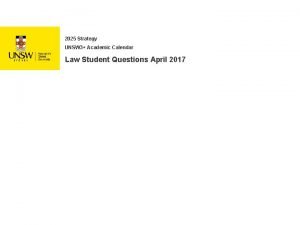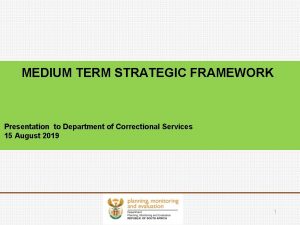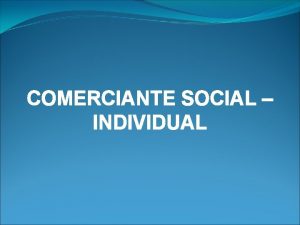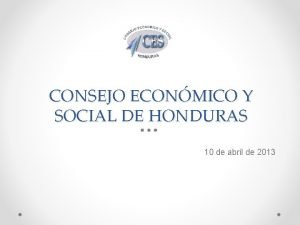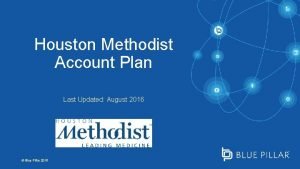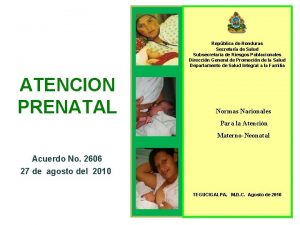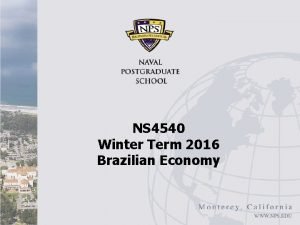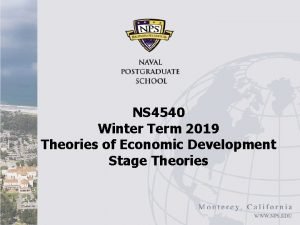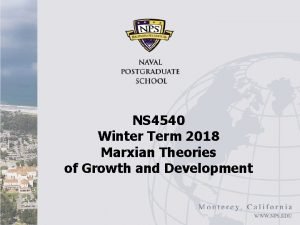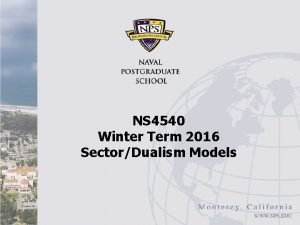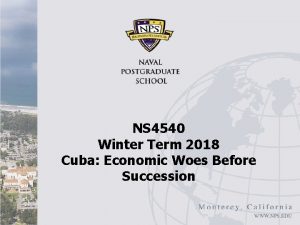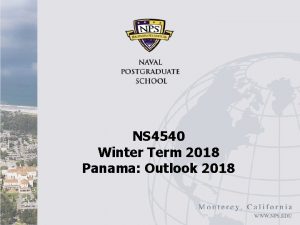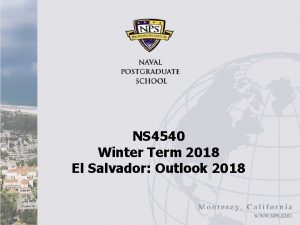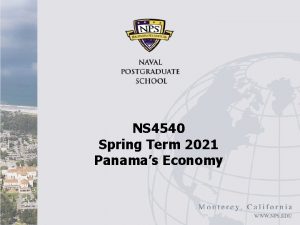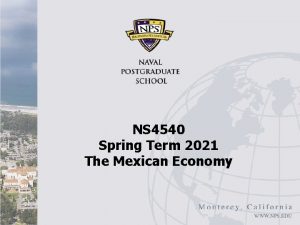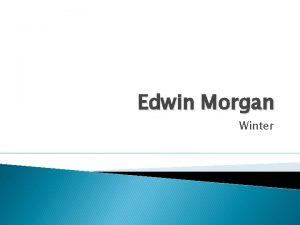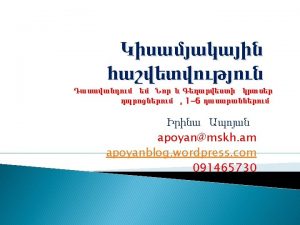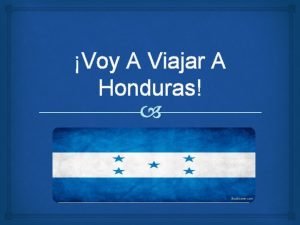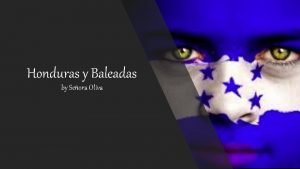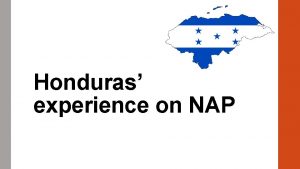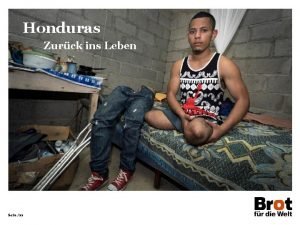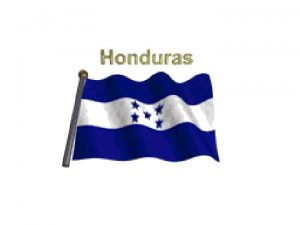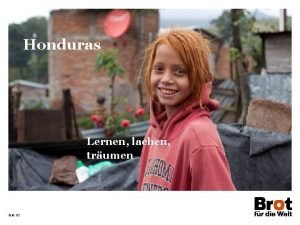NS 4540 Winter Term 2019 Honduras Economy Honduras
























- Slides: 24

NS 4540 Winter Term 2019 Honduras Economy

Honduras Profile 2

Honduras Trade Partners 3

Central America: Economic Freedom 4

Honduras Economic Freedom 5

Honduras Governance Trends 6

Doing Business in Honduras 7

Violence Trends 8

FDI into Honduras 9

Competitiveness I 10

Competitiveness II 11

Competitiveness III 12

Overview I • With gross national income per capita at US$2, 766 in 2018, Honduras remains one of the poorest and least developed economies in Latin America • Over one half population is living in poverty • Also one of the highest inequality ratings in the region • Acute socio-economic problems fueled significant levels of crime and corruption • Despite some success in efforts to diversify the country’s economic base, Honduras remains overly dependent on primary agricultural and fisheries exports • Dependence on agriculture has made the economy vulnerable to frequent natural disasters 13

Overview II • Country sustained steady rates of growth during most of the 2000 s • GDP increased at an average annual rate of 4. 1% 2000 -18 after 2. 6% 1980 -99 • Growth fueled by a sharp increase in credit and FDI stemming from debt reduction and free trade agreements • Population estimated at 8. 9 million at mid-2015 • Population growth rate slowing progressively decreasing to an annual rate of 2. 0% from 2. 5% in 2001 • High levels of underemployment in agricultural workforce • Pressure on land • Increased mechanization of export agriculture and • Seasonal nature of coffee, banana, sugar, and fruit production 14

Poverty in Honduras 15

Honduras Human Development 16

Manufacturing • Honduran manufacturing sector underwent substantial transformation in the 1980 s and 1990 s with the establishment of maquila (offshore assembly) plants producing goods for re-export • Maquila industry benefited in 2000 from the extension of NAFTA import duty to Honduran assembled goods • Allowed import tariffs to be reduced by 15% on such goods entering U. S. market • Enabled sector to diversify into textile operations such as dyeing and cutting • Maquila sub-sector further boosted by the CAFTA-DR) with the U. S. ratified in 2005 • Since then Honduran exports quite sensitive to developments in U. S. Economy • Output growth in manufacturing averaged 2. 7% in 200413, sector’s share of GDP was 17. 4% in 2014 17

Criminality and Corruption • In power since January 2014 President Orlando Hernandez has made combatting criminality and drug trafficking one of his government’s priorities • Despite progress made Honduras is still one of the most dangerous countries in the world • Violence and criminality are one of the main curbs on investment • Corruption still widespread – policy and judiciary included • President’s brother arrested on drug trafficking charges in November 2018 • Major Bank scandal (Rosenthal family) accused of laundering drug money • Image of country tarnished – investors associate country 18 with drug trafficking

Political Instability • The November 2017 presidential election was followed by violent protests • Made the security situation more uncertain, despite the progress made (homicide rate lowered from 75 to 37 cases per 100, 000 inhabitants since 2014). • The two finalists, Juan Orlando Hernandez (National Party, whose candidature to the election was highly disputed) and Salvador Nasralla (Opposition Alliance against Dictatorship), both announced their victory. • The Electoral Tribunal officially announced Mr Hernandez’s victory which has been highly criticized by international observers • Mr Nasralla has refused to accept the results despite US pressures, calling for protests, while the violence has 19 already claimed several victims.

Honduras: Prospects I • With U. S economy doing well Honduran economy should fare well • U. S. accounts for 44% of exports and 80% of remittances • Continuation of austerity policy under the IMF • Adjustment measures adopted from 2014 • Higher fuel taxes and • VAT raised from 12% to 15% • Freeze on civil service salaries • Have helped reduce deficit in public accounts • The tax liability law approved in 2016 sets a ceiling for the non-financial public sector deficit: 1% of the GDP by 2020. • An extension of the agreement with the IMF after its deadline of December 2017 may occur. 20

Honduras Prospects II • • The government will prioritize fiscal consolidation, and policies to foster employment and reduce poverty. Efforts to tackle gang- and drug-related violence and the high murder rate will continue, as will steps to address corruption, but progress will be limited. Decelerating private consumption-due to rising consumer prices and slower remittance inflows-will contribute to an easing of GDP growth to 3. 4% in 2019, down from an estimated 3. 5% in 2018. Growth will average 3. 4% in 2019 -23. 21

Honduras: Macroeconomic Forecast 22

Growth Projections 23

Risks to Forecasts 24
 Cs 4540
Cs 4540 Meine lieblingsjahreszeit ist der winter
Meine lieblingsjahreszeit ist der winter Winter kommt winter kommt flocken fallen nieder
Winter kommt winter kommt flocken fallen nieder Winter kommt flocken fallen nieder
Winter kommt flocken fallen nieder Athenian economy vs sparta economy
Athenian economy vs sparta economy Unsw calendar 2022
Unsw calendar 2022 Medium term strategic framework 2019 to 2024
Medium term strategic framework 2019 to 2024 Creative arts, grade 8
Creative arts, grade 8 Long term memory vs short term memory
Long term memory vs short term memory Long term liabilities
Long term liabilities Difference between long term and short term liabilities
Difference between long term and short term liabilities Short, medium and long-term goals examples
Short, medium and long-term goals examples Linear pattern formula
Linear pattern formula Maxterm expansion
Maxterm expansion Long medium and short term planning in primary schools
Long medium and short term planning in primary schools Short term financial management
Short term financial management Short term human resources examples
Short term human resources examples Term to term rule example
Term to term rule example Term-to-term rule
Term-to-term rule Term to term rule
Term to term rule Term to term rule
Term to term rule Concepto del comerciante
Concepto del comerciante Estructura del poder judicial honduras
Estructura del poder judicial honduras Meddpicc
Meddpicc Carnet prenatal honduras
Carnet prenatal honduras





